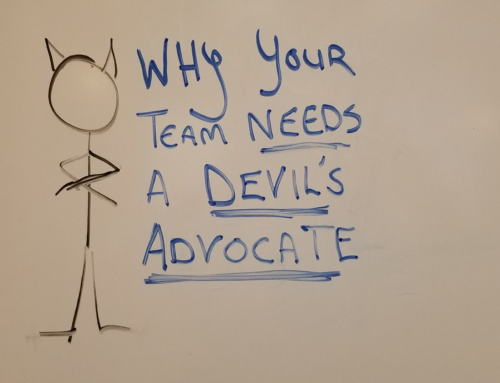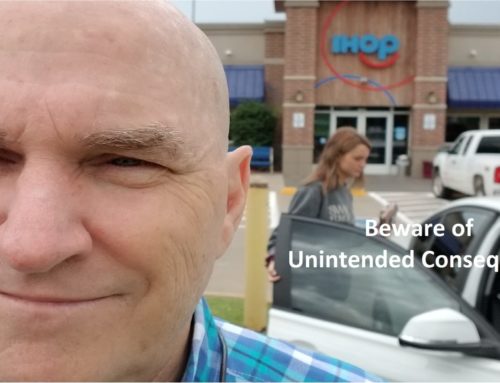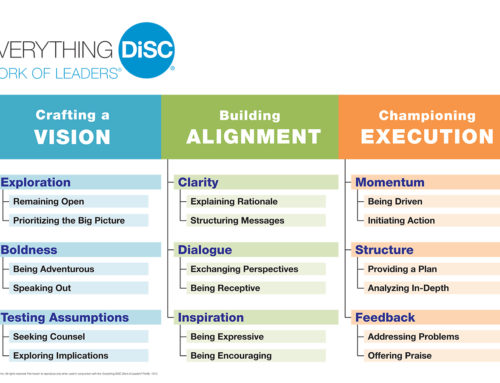We all make bad decisions.
Sometimes the consequences of those decisions are inconsequential. Other times they can be devastating.
A few years ago Blockbuster Video had the opportunity to acquire a little start-up (Netflix) for a paltry 50 million dollars. They decided not to. Really Bad Decision. Netflix has recently been valued at 32.9 billion. Yes, b as in billion. Someone is still kicking themselves for letting that one get away.
Are you still having a hard time getting the video of the passenger being dragged off the United Airlines flight out of your head? Anyone remember Circuit City, that company that got rid of all their experienced workers to save a few bucks by hiring inexperienced minimum wage workers?
These are Really Bad Decisions.
You’re probably thinking of a dozen really bad decisions that made headlines. These are not decisions made by the guy in the mailroom. They are decisions made by people at the very top, people we assume should know better. Their actions leave us scratching our heads wondering, “What were they thinking?” The truth has more to do with what they weren’t thinking.
Here are five thinking steps that will help you avoid making RBD’s (Really Bad Decisions).
-
Be aware of emotions running in the background.
Take an inventory of your emotions when attempting to make an important decision. Really Bad Decisions happen when the decision maker is experiencing an emotion related to making the decision without being aware of having the emotion. If you dig down to the roots of a Really Bad Decision, you will probably find a decision rooted in fear: Fear of losing my job, my social standing, my status, my image of being competent, or my year-end bonus.
The emotion is not a bad thing. Lack of awareness of our emotions and failure to take them into account in the process of deciding is a bad thing.
If you dig down to the roots of a Really Bad Decision, you will probably find a decision rooted in fear
If I’m trying to make a decision and I’m aware that fear is having an impact on my judgment, I can choose to compensate for my fear. However, if I’m not aware of fear, then I may find myself running scared, going down a path that will end in a bad decision.
Take Action: Be Self-aware.
When faced with a major decision, ask yourself, “When I consider this, what worries me?” Make a list of the worries that come up. Writing them down on paper will give you more control over them, so they will have less control over you. This will give you more control over your decision and it’s outcome.
Learn to tune in to the emotions that are running in the background. This is called Self-Awareness. It’s the first step in improving your Emotional Intelligence, (EQ), or what I prefer to call your Emotional literacy.
-
Recognize your assumptions. Separate assumptions from facts.
Assumptions are beliefs or expectations about how the universe is or should be. Some assumptions are healthy, some are not. When you meet someone for the first time you might not feel really comfortable with them. We assume that strangers are not to be trusted, but we gradually let down our guard as we get to know a person. This assumption initially protects us. Over time your friendship grows and because of a healthy assumption (this person is safe), you don’t have to go through a vetting process each time you hang out with them. You assume that they are still your friend and have your best interests at heart.
The problem with assumptions in the decision-making process is that we make a lot of unconscious assumptions and work with those assumptions as if they were facts. We tend to see stuff in print or in social media and automatically assume it’s true. When you assume that something is true, just because you read it somewhere—like the internet, or on Facebook— and fail to challenge its validity you can be heading down the road to a really bad decision.
Take Action: Don’t Assume
With every piece of information you’re considering in your decision, ask yourself, “What am I assuming to be true?” Do you have a system or method of reminding yourself to challenge your assumptions? Cultivate the habit of continually challenging your own assumptions. How often do we interpret someone’s facial expressions as, “He’s mad at me,” or “She’s stuck up” when that person may just be deep in thought? In that moment we have made an assumption and acted on it by behaving defensively toward them. Because we didn’t challenge the assumption (self awareness) we react automatically, and we fail to engage in self-management.
This is the second element of EQ or Emotional Literacy: managing our behavior by challenging our assumptions rather than acting on impulse.
-
Filter Your Facts for Relevance use the CRAAP test
After separating fact from assumption, we still need to evaluate the information to determine if it is relevant to the decision. Is it important or is it a load of B.S? You’ll be able to tell the difference by using the CRAAP test.
The CRAAP TEST: Ask yourself, “Is this information….?”
Current: Is it up to date?
For example, if you’re doing research on the very latest mobile phone technology and you’re looking at five-year-old information it’s probably long outdated, and not useful for your purposes..
Relevance: Does it relate to the problem?
It might be good information, but is it directly or even indirectly related to what you’re considering?
Authority: is the author qualified?
One does not have to have a Ph.D. in order to speak authoritatively; however, do they have life experience or special training, or are they a scholarly person who has done extensive research? What is the person’s qualification to speak authoritatively on this subject?
Accuracy: Is it on target? Blog or NY Times?
Anyone can blog about anything. Bloggers are not required to adhere to a code of ethics, and much of blog content is opinion. You might not agree with the editorial stance of the New York Times; however, opinion is clearly marked as such. Their journalists adhere to a code of professional ethics5 which centers around these tenets: “Seek truth and report it, minimize harm, act independently, be accountable and transparent.” While you might question the ethics of some individual journalists, the intent of the profession is to be accurate.
Purpose: Inform, teach, sell, or persuade?
This one is a real-eye opener. With every bit of information you consider in the decision-making process ask yourself, “What was the intent of the person or organization that provided this data? Was it simply to inform or teach? Or are they selling something? Are they trying to persuade me to join their cause, espouse their beliefs, carry their flag?”
Take Action: Use the CRAAP Test to filter fact from fiction.
Develop a critical eye for spotting fiction. As you read through Facebook posts or watch the news, apply the CRAAP test. You’ll be amazed at how much baloney is presented as fact. The CRAAP test is an eye-opener for fake news.
-
Chart your decision and then do it.
You’ve examined your background emotions, exposed your assumptions, filtered your facts, and now you’re ready to make a decision. If you’re an introverted, detail-oriented fact-finder, there might not be enough data in the world to give the assurance you need to move forward. At some point, you need to simply take the next step and make the decision.
Map out your choices on paper. Create a time-line for accomplishing milestones, and a list of all the people who will be impacted by each step. Diagram it and put it on your wall. Then do it.
Take Action: Go for it!
Draw your decision out. Flip charts and dry erase boards are great for this. Get your decision on the wall where you can look at it and think through the entire process. Draw it. Do it!
-
Follow up.
The number one failure of new managers and supervisors is not following up on an action.
Set dates on your calendar and then take the time to actually follow up on your decision. Ask yourself, “What worked? Why? What didn’t work? Why? What could we have done better? What did we miss? If I have to make this decision again, what will I have learned from this?”
Take Action: Set a Date to follow up and then follow through
One common mistake that new leaders make is not following up on a decision. Follow up is hindsight. It’s a great teacher if we’re willing to take the time to face our own mistakes and learn from them. John Maxwell said, “The only failure is the mistake we don’t learn from.” So follow up.
The Emotionally Intelligent Leader
The Emotionally Literate Leader is aware of his or her emotions, is careful not to make assumptions, and takes the time to consider the relevance of facts in making big decisions. When you take the time to go through this decision-making process, you’ll find yourself making a lot more Really Good Decisions and fewer Really Bad Decisions.
Tim Hast is a partner at Encore Life Skills LLC. He provides executive coaching, organizational training and development services. Please take a moment to share your favorite RBD with him. tim@encorelifeskills.com







Leave A Comment